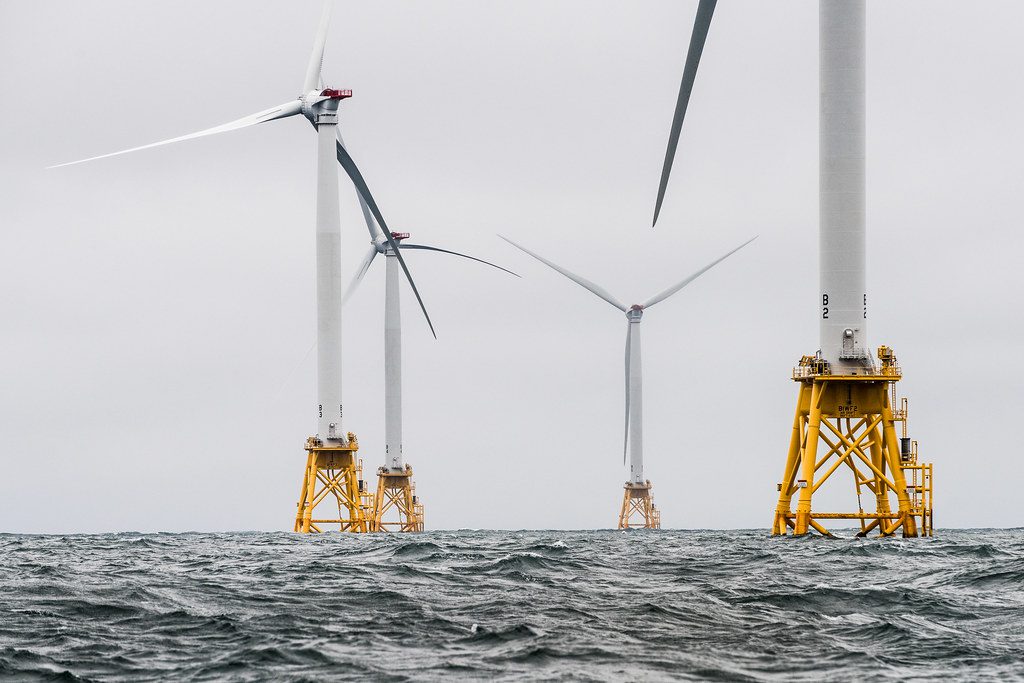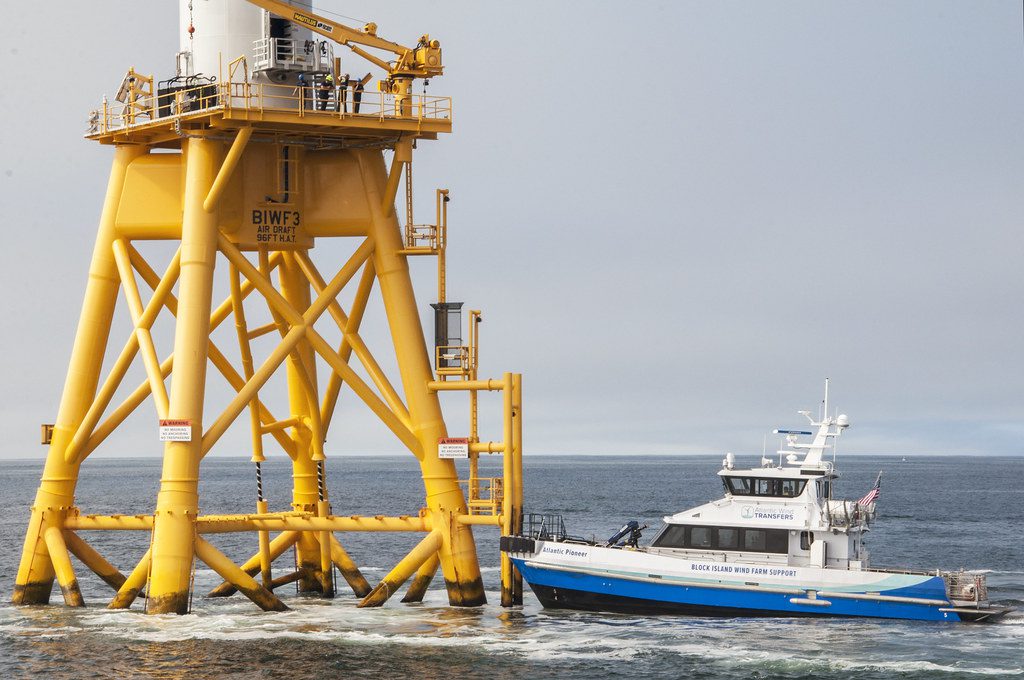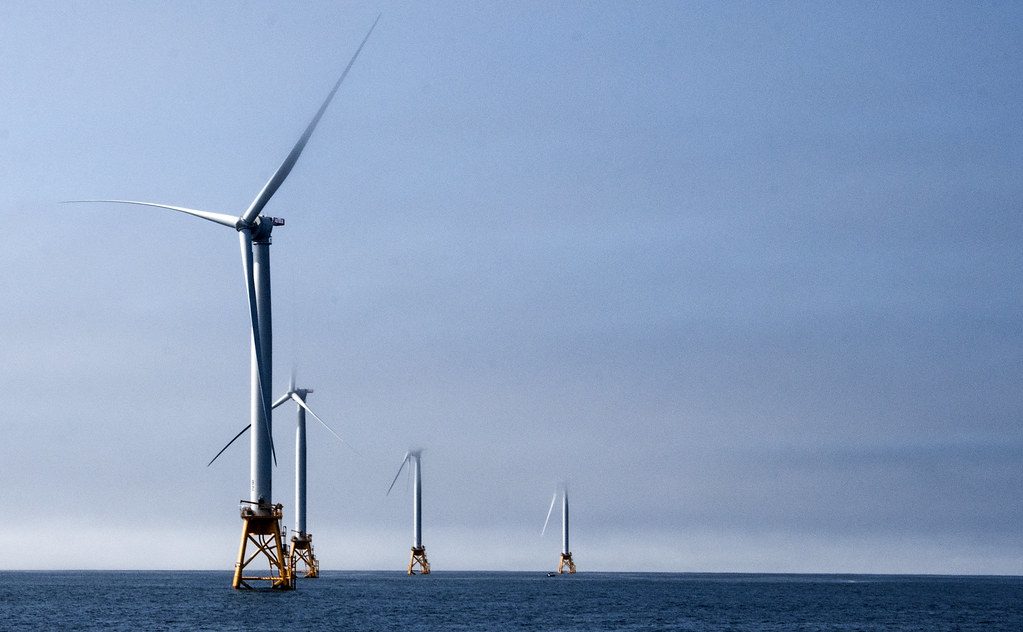Block Island Wind Farm is the first commercial offshore wind farm in the United States, located 3.8 miles (6.1 km) from Block Island, Rhode Island in the Atlantic Ocean. The five-turbine, 30 MW project was developed by Deepwater Wind. Construction began in 2015 and in late summer 2016 five Alstom Haliade 150-6-MW turbines were erected. Operations were launched in December 2016. It is the largest project using wind power in Rhode Island. The Block Island Wind Farm will lower carbon dioxide emissions by 40,000 tons each year. That’s 800,000 tons over 20 years – the equivalent of taking over 150,000 cars off the road.

The offshore wind farm is equipped with five GE Haliade 150-6MW offshore wind turbines. The three-bladed turbine was commercially deployed for the first time offshore. It has a 150m diameter rotor, which provides a 15% better energy yield compared to existing offshore turbines.
The turbine is equipped with a direct-drive permanent magnet generator and three identical full-power converters operating at 900V each. The turbine parts, including the inverter, transformer, switchgear and low-voltage electrical distribution cabinet, are located at the tower base. The use of the generator eliminates the need for a gearbox. Each turbine foundation weighs approximately 1,500t, featuring steel jackets, decks and piles.

The wind farm structures, designed by Alstom Wind, stand 600 ft (180 m) high and can withstand a Category 3 storm. The foundations were designed by Louisiana-based Keystone Engineering Inc. to withstand a 1000-year storm. The foundations’ robust strength is the product of meticulous design processes and thorough engineering analysis performed by Keystone. While the four-pile jacket foundation is common for offshore oil and gas platforms, Block Island’s jackets are engineered to handle additional loading and vibration from the spinning turbines Keystone’s engineering team ran thousands of test simulations, repeating each calculation multiple times to ensure the design would hold up under various weather conditions and load scenarios. Altogether, nearly 10 million tests were completed.
According to en.wikipedia.org; power-technology.co. Source of photos: internet








